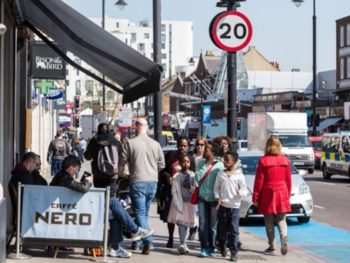Government to curb ‘anti-driver’ Low Traffic Neighbourhoods and 20mph speed limits
The Government has announced a crackdown on “anti-driver” road schemes, “over-zealous” traffic enforcement and 20mph limits under its Plan for Drivers.

The Government says it’s raising the bar to help ensure all traffic schemes work for everyone in the community
The Department for Transport said the latest measures would help motorists and other road users to benefit from smoother journeys and reduced congestion, with local people getting a stronger voice on road schemes that affect them.
Launched in October 2023, the Plan for Drivers sets out 30 measures to improve the experience of driving through smoother journeys.
The latest additions include new guidance on Low Traffic Neighbourhoods – following the recent LTN review, this sets out requirements for local authorities to gain buy-in from local residents, businesses and emergency services when considering implementing new schemes.
Councils have also received strengthened guidance on setting 20mph speed limits, reminding them to reserve them for sensible and appropriate areas” only – such as outside schools – and with safety and local support at the heart of the decision.
Consultations are also launching focusing on preventing local councils from profiting on enforcing traffic restrictions. This includes fines for drivers going into yellow box junctions or parking restrictions. The eight-week call for evidence will seek views from residents and will also quiz local authorities on how money from fines is reinvested.
A consultation will also launch this summer on measures including the removal of local authorities’ access to Driver and Vehicle Licensing Agency (DVLA) data to enforce such schemes by camera.
Other measures include new bus lane guidance, a consultation on allowing motorcycles to use bus lanes by default and revised lane rental schemes guidance – making it easier for councils to charge utility companies who slow drivers when conducting street works, and allowing the funds generated to be used to repair potholes.
The latest steps in delivering the Plan for Drivers measures also include £50m to upgrade traffic lights, speeding up journey times. And nuisance ‘boy-racers’ who illegally modify their exhausts and disturb our streets are also being targeted. New research reveals the success of noise cameras in cracking down on illegally modified exhausts and anti-social drivers. The research will be used to encourage local authorities to install noise cameras after successful trials in Bradford, Birmingham, Bristol and Great Yarmouth.
The DfT said the consultations are launching to prevent local councils from turning drivers into ‘cash cows’ by enforcing unfair restrictions.
If local authorities fail to deliver sensible road schemes that work for local people they could see future funding withdrawn, and under powers from the Traffic Management Act, the Government could ultimately take control of an authority’s roads where they are deemed to be widely mismanaged.
Transport Secretary Mark Harper said: “We want local people to have their voices heard, and any traffic schemes to have the consent of those they impact.
“Well-thought-out schemes, like 20mph limits outside schools, can make our roads safer, but we are raising the bar to help ensure all traffic schemes work for everyone in the community.
“We’re on the side of drivers, and these latest measures show we’re getting on with delivering what we promised in our Plan for Drivers – making their lives better, fairer and cheaper, and helping people travel in the way that works best for them.”
The Plan for Drivers has already set out measure to crack down on disruptive street works, cutting traffic and anticipated to generate up to £100m over the next ten years. It has also launched grants for schools to accelerate the rollout of electric vehicles charge points, making it easier for drivers to make the switch.
The AA has welcomed the latest updates.
Jack Cousens, head of roads policy, said: “The best traffic management schemes are the ones which have undergone significant local consultation from their inception. Residents and businesses want to help shape their communities and respond much better to co-operative solutions rather than told what will be placed upon them.
“Allowing more councils to impose fines for yellow box junction offences has resulted in some drivers feeling that they are seen as ‘wallets on wheels’ by their local authority.
“The reality is that the very best yellow box junctions, bus lanes and car parks are the ones that generate the fewest fines. That’s because road users quickly and clearly understand what is expected of them.
“The vast majority of drivers are law-abiding and make honest mistakes, so providing warning letters to first-time offenders would help educate the public whilst maintaining trust in town halls.”
However, Paul Tuohy, from charity Campaign for Better Transport, said: “Divisive rhetoric which pits drivers against public transport users is a nonsense. Many drivers are public transport users too, and many more would like to be.
“Bus lanes and other bus-friendly measures, such as phased traffic lights, are a tried-and-tested way to reduce congestion by speeding up bus journey times and boosting bus passenger numbers. Any measures which reduce their effectiveness will not just result in longer journey times for bus passengers, it will also result in longer journeys for drivers too.”












